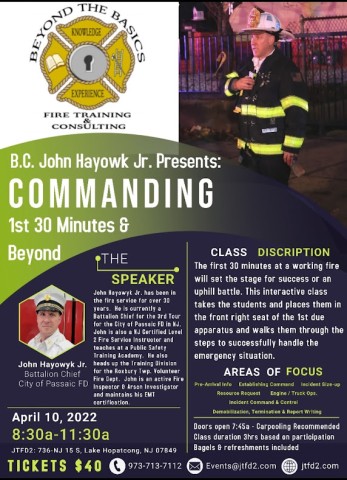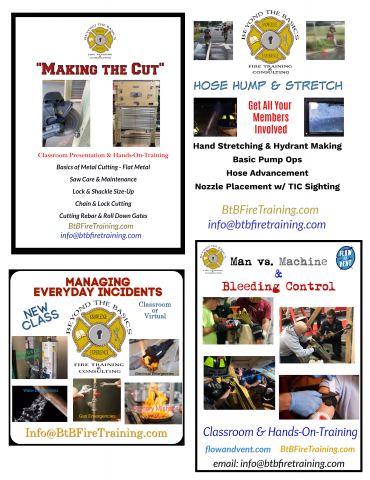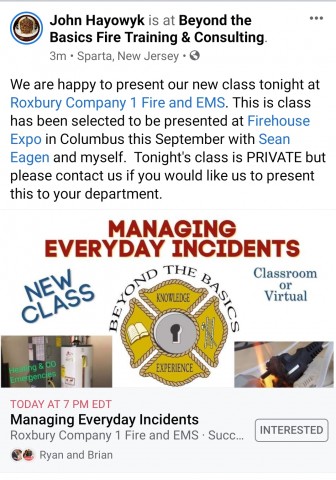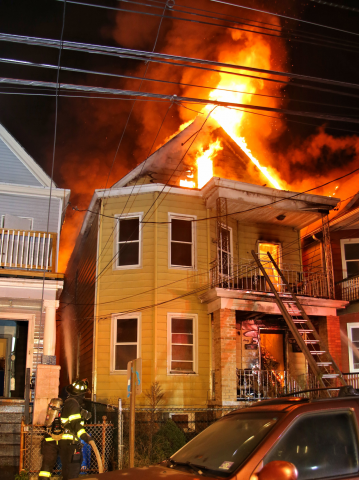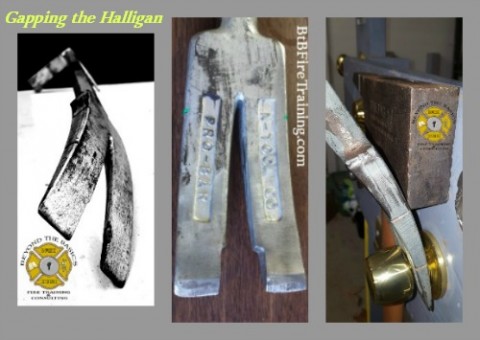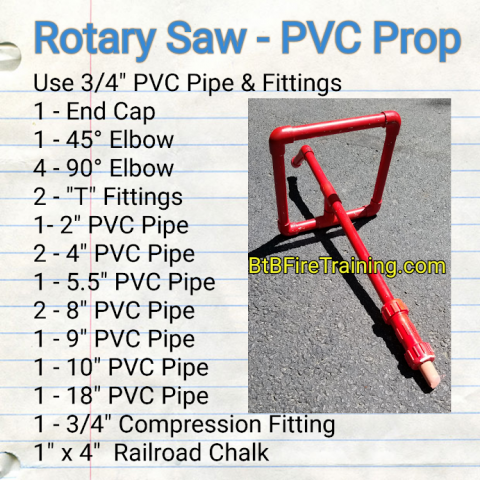
Subscribe To Blog
Beyond The Basics Fire Training
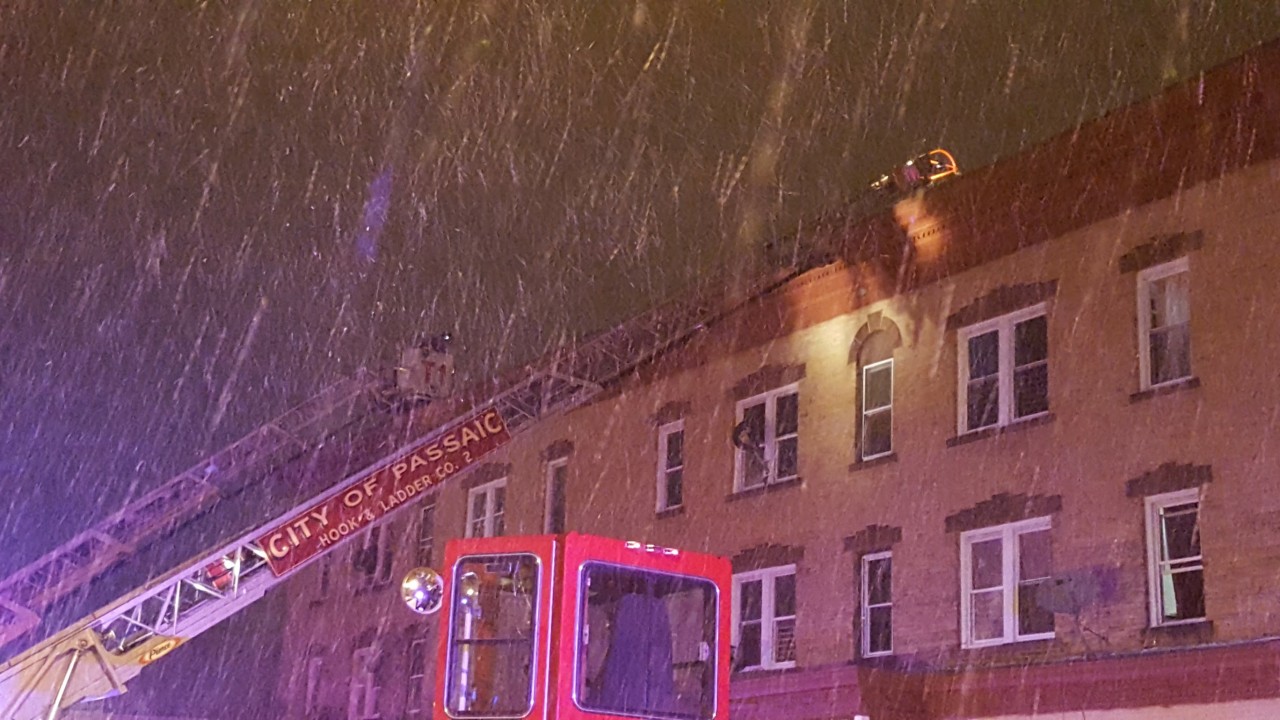
https://www.firefightertoolbox.com/3-ways-access-roof-quickly-2
In my previous section of this article we discussed using adjoin buildings to get to the roof. Now we will concentrate on the next best way to get to the roof.
LADDERS
Ladders are the second best way to access the roof. The use of aerial ladders, either a platform or a straight stick laddered to the roof will get you topside quicker than throwing an extension ladder to the roof. There are a few key items that need to be looked for when placing ladders to the roof.
OVER HEAD OBSTRUCTIONS
Over head obstructions, most importantly power lines as well as phone and cables lines must be avoided at all costs. Contact with these lines at the least will cause you issues. The most severe issue is electrocution. Power lines have been known to arc and they follow the path of least resistance to the ground. Contact with wires by an aerial ladder or ground ladder will at least cause damage or injury and the worst case scenario is death of a firefighter or crew.
AVOID THE FLAMES
Place the ladder so it will not come into contact of with fire venting from the building especially if your task is to operate on the roof. Flame impingement on a ladder will weaken the ladder and potentially cause it to fail when a load is placed on it, for example climbing or descending the ladder. Set the ladder so the rungs extend 3 to 5 feet above the wall so it makes it easier to get on and off the ladder. While on the roof the extended rungs above the roof line provides a good reference point when operating.
CLIMB SAFELY
When climbing any ladder we must remember to always maintain 3 points of contact at all times. This safety feature is essential to maintaining proper balance and control. When carrying tools to the roof its imperative to be conscious of any potential shift of weigh by the tool so that you can be prepared for it. So it does not cause us to slip and potentially fall.
Before exiting onto the roof; do a visual size-up and be sure to sound the roof. Sounding the roof gives you an indication if the roof is sturdy enough to operate on. Never jump onto the roof from the ladder. Jumping onto the roof from the ladder or platform will create a localized impact load in the place you land. If the roof was weak you may compromise that area and the rest of the roof. Almost nothing is scarier than hearing that a firefighter has fallen through the roof into the burning building. Be proactive and keep yourself and your crew safe.
BE WEATHER-WISE
When there is inclement weather always take extra caution when climbing on and off the ladder on the roof. If there is ice and snow, perform a risk / benefit analysis before setting foot on a roof top skating rink. The first step onto an icy roof may be your last.
Ladders both aerial and ground are great tools to get on the roof. Use of caution for both types is essential. Keep watching for Part 3 of the Series of Getting to the Roof Quickly, and Stay Safe.
Contact This email address is being protected from spambots. You need JavaScript enabled to view it. for tickets & info.
The true answer is ALF.
Adjoining Buildings / Ladders / Fire Escapes We will discuss 3 ways to access the roof, ranging from easiest to the most difficult and dangerous. #1 – Adjoining Buildings Firefighters can gain access to the roof top of the fire building from an adjoining building. By climbing the attached building’s interior stairs, we are provided a safe and quick means to access the roof. Upwind If Possible - One trick of the trade is to select the building that is on the upwind side of the fire building to gain access to the roof. The stairway in the upwind attached building usually will be free of smoke and will allow rapid ascension to the roof usually through a bulk head door. If your only option is to take the downwind building’s stairs, be prepared for lots of smoke and heat. Once on the roof, ensure that the bulkhead door that you just exited from does not close and lock behind you; this may be your primary means of egress if things go bad. If you encounter a heavy smoke condition and visibility is low, get down and crawl your way to the fire building. Use a tool to probe and sweep ahead to prevent yourself and your crew from falling into any air or light shafts. If you are approaching from the upwind side, visibility should usually be pretty clear.
Victims - The Bulkhead Door: As you approach the fire building, begin to assess the fire and roof conditions. After sounding the roof for its stability, immediately locate the bulkhead door on the roof of the fire building and open it. Search inside the stairs for any victims that may have mistakenly taken the stairs to try and escape the smoke and heat from the fire below them. If you have victims, remove them and notify command for assistance in getting them to the street. Use the same stairs that you did to facilitate the safe removal of the victims. Be sure to remove the bulkhead door completely or disable it from closing. Removal of the bulkhead door will allow for smoke and super-heated gases to escape the fire building and help to improve conditions for members operating inside the fire building. UPDATE: Removal of the Door - MUST BE COORDINATED with the suppression teams. Improper timing can potentially cause rapid fire spread.
Size-Up & CAN Report: Perform a 360 of the fire building from the roof. Look for any trapped victims on fire escapes or in windows, or victims that may have jumped prior to your arrival. Remember buildings can be deceiving from the A side, look so be the eyes of the incident commander. Give a quick size-up and CAN (Conditions/Actions/Needs) report to the IC.
Do Work & Get Down once your report is complete, locate the area directly over the fire (as much as possible) and prepare for vertical ventilation. Be sure to take the natural opening first then cut the roof remembering to working with our backs to our means of egress. Once your tasks have been completed, advise command of your progress and then get off the roof. This applies regardless of how you made the roof.
Secondary Egress : The attached building’s stairs will allow for the safe movement of manpower and equipment throughout the incident. Be sure to request a secondary mean of egress be placed to the roof as an added safety precaution. The use of adjoining building’s stairs is the safest and easiest method to access the roof.
Stay safe!
Photos courtesy of James Wood, Sr. and John Hayowyk, Jr.
3 Ways To Access The Roof Quickly:
Part 1: Adjoining Buildings
Part 2: Ladders
Part 3: Fire Escapes
Battalion Chief John Hayowyk, Jr., explains why it is ideal to break down an incident action plan into segments.
Contact us for an in-person or virtual class on these types of incidents.
1 18" Zipper Tool Bag----Husky---Home Depot
2 6-in-one Screwdrivers
1 6-piece screwdriver set
1 3lb. Sledgehammer
1 6" long Needle Nose Pliers
1 8" Slip Joint Pliers with one handle modified for the Key Tool: Use less expensive pliers only*
1 4" Vice Grip type pliers with Eye Hook Modification
1 8" Vice Grip type pliers with Eye Hook Modification
1 12" Wonder Bar
1 7.5" pry bar
1 14 - in- 1 Spackle Knife
1 Modified J Tool---use long handle paint roller
1 Safety Glasses
1 18" Pipe Wrench
1 3' long Continuous Loop of Webbing w/ Non-locking Carabiner - Used with Vice Grip Pliers for cutting locks/chain.
1 S&D Rex Bar
1 Bag of 14" Heavy Duty Zip Ties
1 KNIPEX Model 71 12 200 Comfort Grip High Leverage Bolt Cutters w/ Opening Lock and Spring.
1 K-Tool
1 6’ piece of FLAT (not tubular) piece of Webbing
* Modify one handle of the Slip Joint pliers by bending inward the end of the handle and grind to a dull point to use as a key tool.
PURPOSE: Thru-the-Lock Forcible Entry for Doorknob Removal of Residential & Commercial Buildings
PROCEDURE: Slowly grind the fork end to create a 1 ¼” wide by 1 ¼” deep gap between the forks w/ bench grinder (Easiest)
DISCLAIMER: (Get Permission to Modify the Halligan FIRST) / Wear Proper PPE while using a Grinder
TIPS: Wire Brush the sharp edges when complete & lightly oil the fork end of the Halligan
STAY SAFE
This prop will assist in teaching different cut techniques w/o the mess and noise.

One of the simplest and most advantageous modifications to a Halligan Bar is to GAP the forks.
Gapping the forks of the halligan makes a conventional forcible entry tool into a THRU-THE-LOCK tool.
Thru-the-Knob Technique:
This technique is based on using leverage to force the knob off from the knob assembly.
This is accomplished by taking the gapped fork end of the halligan and sliding it behind the door knob. The space behind the halligan and the door is taken up by another tool. There are several different tools that can be used to take up that space. Most likely, the flat head axe is available since it's usually married to the halligan as a set of irons. But, another halligan or pike pole can be used if available.
The upper shaft of the halligan bar is then pushed towards the door with force, and that will displace the door knob from the rest of the door knob assembly.
Once the knob is off, look where the keyway was and see what type of tool you will need to manipulate the spindle which will operate the deadlatch or latch assembly to unlock the door. For most residential door knobs, you will need a needle nose pliers to turn the spindle 90 degrees to unlock the door. Once the door is unlocked turn the stem with your gloved hand to engage the deadlatch to open the door.
For commercial knobs, you will need a screwdriver to turn the cylinder to activate the latch assembly. While the latch assembly is engaged, push / pull the door open. Be sure that the door does not lock behind you, physically unlock the door from the inside knob.
Physically Gapping the Fork:
Gapping the fork is a relatively easy process. This can be accomplished by either using a bench grinder or a standard handheld angle grinder. (Obviously use safety glasses and gloves when using a grinder.) Prior to doing any grinding mark out the area on the inside of the forks where the grinding is to occur. Mark the area on the halligan with a pencil or marker that's approximately an inch and 1/8 wide by an inch and 1/8 deep. This will give you plenty of room for the fork end of the halligan to slide behind the door knob of either a residential or commercial door knob.
The key is to slowly grind away the marked area, being careful not to overheat the forks of the halligan. Once the area has been ground away; use a wire wheel to remove any sharp edges or burrs.
One last note, if the halligan is not personally YOURS, be sure to get permission to make the modification before you do it.
STAY SAFE
Author: John Hayowyk Jr.
Date: May 3, 2018


